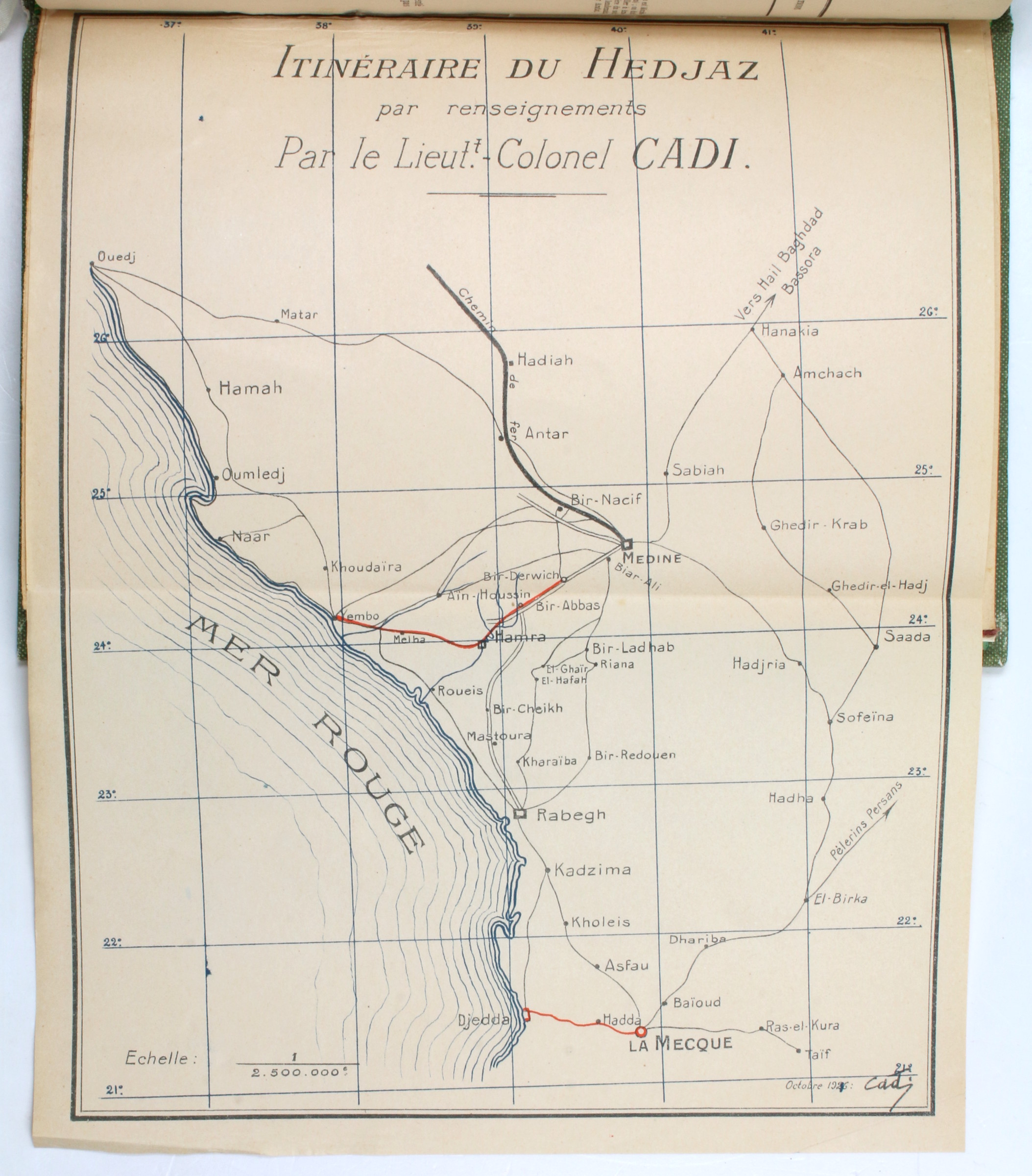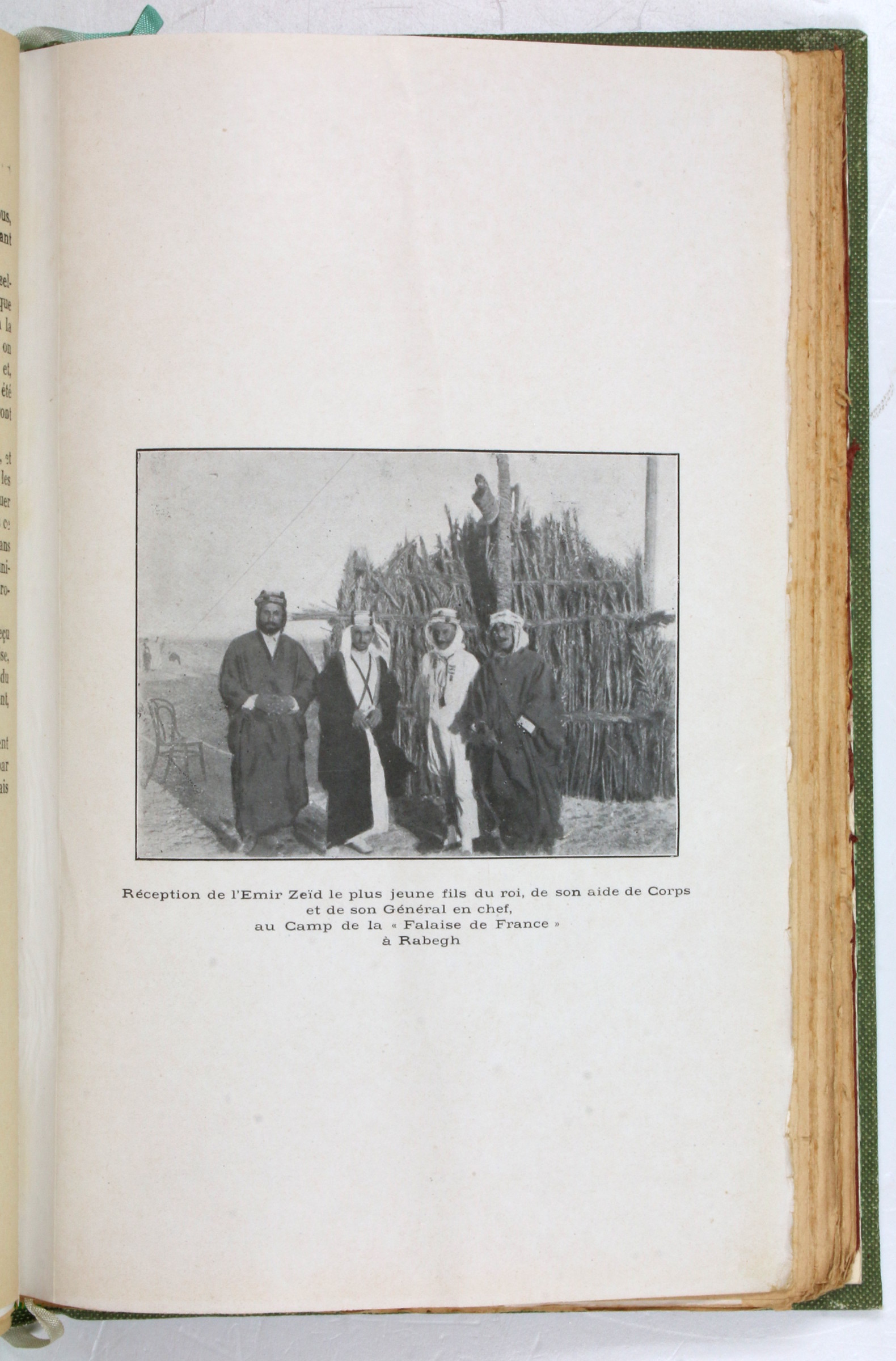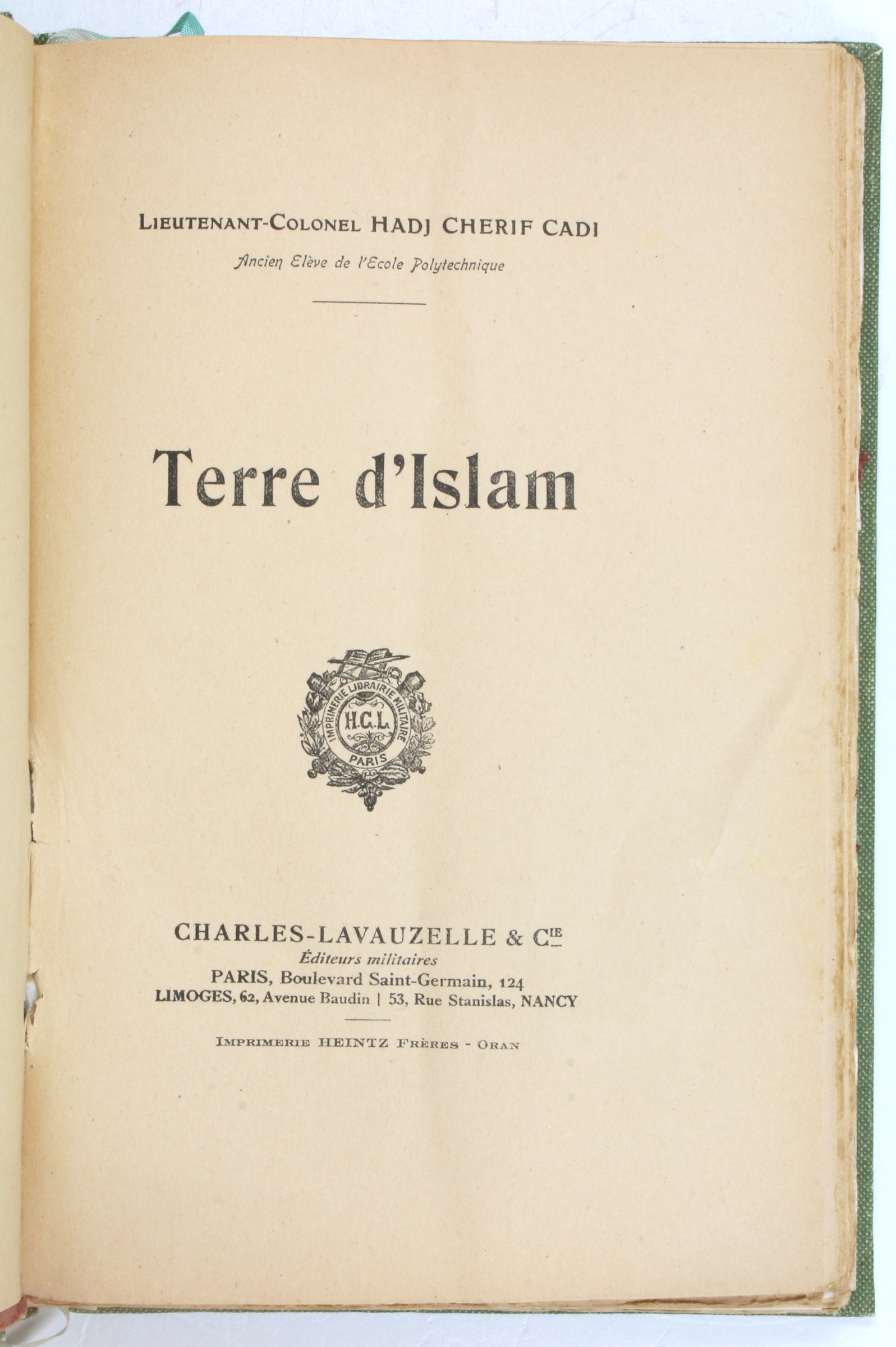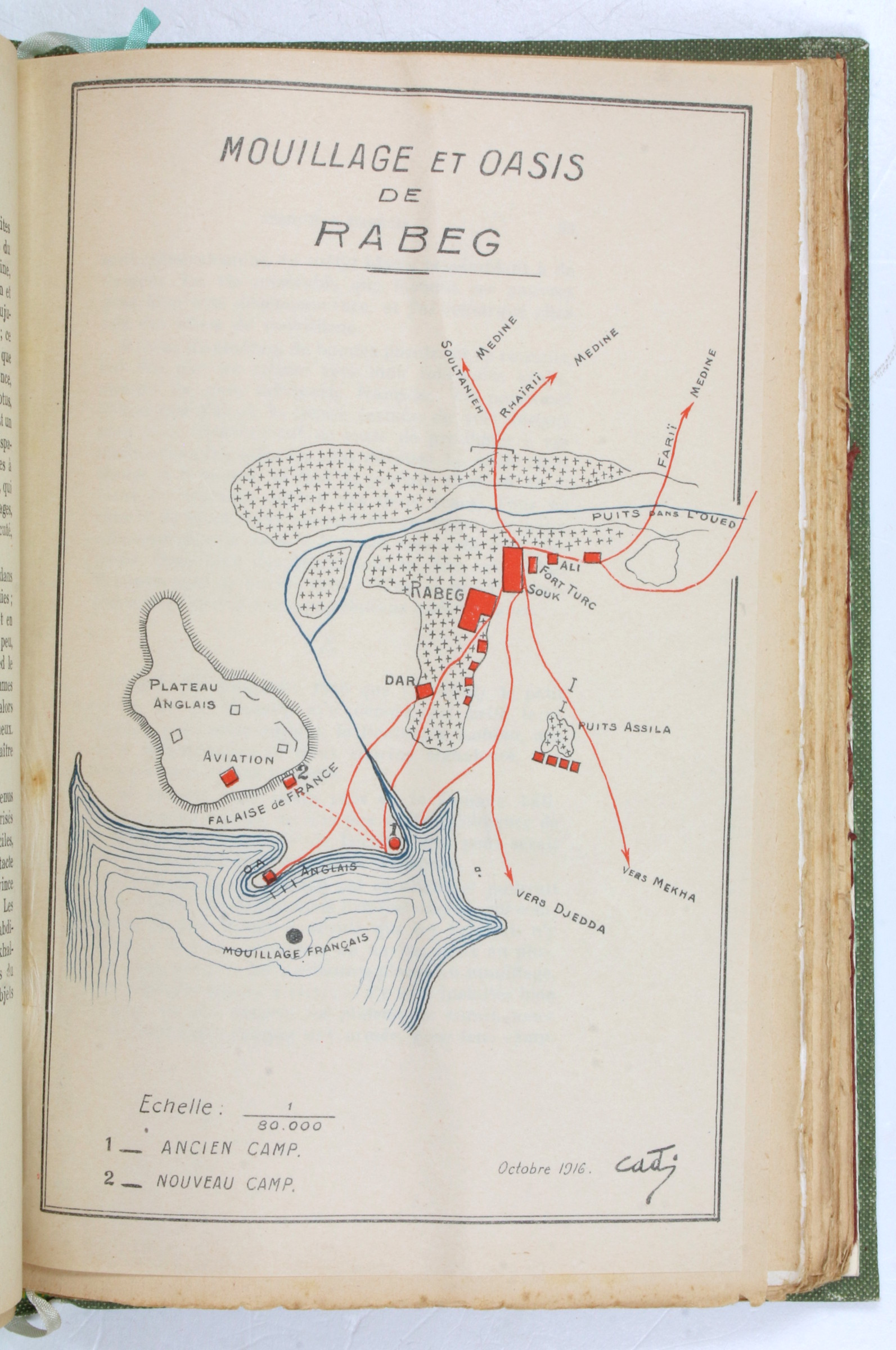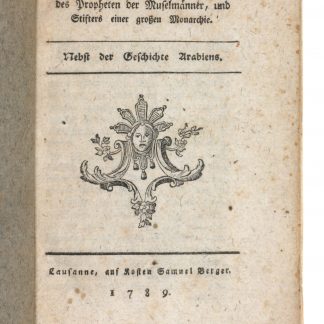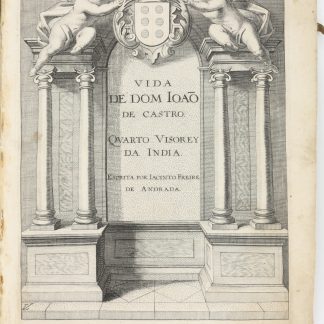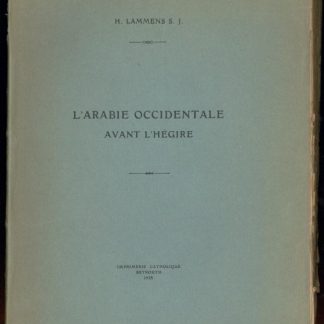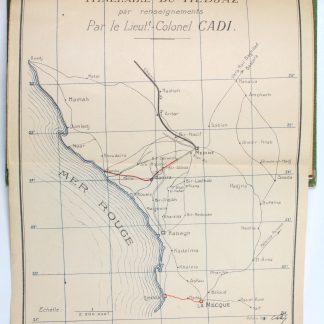"J'oublie les horreurs des tueries, là-bas, à Beuvraignes, Lassigny, Roye, Verdun"
Terre d’Islam.
Large 8vo (174 x 260 mm). 164, (1), (1 blank) pp. With 6 halftone photo plates (one folding) and 3 maps and plans (1 folding). Original wrappers bound in contemporary green cloth with red morocco spine label, titled in gilt; modern marbled endpapers.
€ 5,000.00
The personal record of a World War I Hajj pilgrimage and secret French diplomatic mission to the Sharif of Mecca, led by the first Muslim Algerian ever to be admitted to France's officer training school, the École Polyteqnique. A veteran of earlier intelligence missions into Germany, Lieutenant-Colonel Cherif Cadi (1867-1939) was selected along with one other officer to accompany several hundred North African Muslims on the 1916 Hajj - and in doing so was able to make his own pilgrimage for the first time, amidst a backdrop of international espionage, revolution, and war.
The folding map at the rear of the volume traces Cherif Cadi's route, stopping at port in Yembo and travelling via Hamra to Medina, and then arriving in Jeddah to make the trek to Mecca itself. Notable on this map is the southern stretch of the Hejaz Railway, which can be seen running through Hadiah, Antar, Bir-Nacif before connecting with Medina.
Cherif Cadi, who had been required to undergo extensive "naturalization" in order to be allowed to graduate as an officer in the French Army, evidently took solace in the cultural, scientific, and religious history he found in the Hejaz. His task assigned by the French government was to feel out the military needs of the pro-Arab Sherif of Mecca and newly named King of Hejaz, Hussein bin Ali al-Hashimi (1854-1931), who (as the French hoped) would fight the Ottomans in the Arab Revolt. His work in this area is illustrated with several interesting photographic plates, including a portrait of al-Hashimi's son, the Iraqi prince Zaid bin Hussein (1898-1970) standing with his aides and General in Chief in Rabegh.
By 1916 Cherif Cadi had been awarded a Croix de Guerre and a place in the Legion of Honour, but after the war and he found himself increasingly sidelined by racist French military policy. Nor was he perfectly at ease in Algeria, where his French education distanced him from the core of the Algerian push for independence. It was during his retirement that he wrote his memoir, and it is notable for its political undercurrents and considerations of Algerian nationalism as well as for its sympathetic descriptions of Islam, the Bedouins, and the history of Muslim astronomy, a particular passion of his. In one passage, he describes how the night sky of the Hejaz desert brought comfort in the midst of an ongoing and brutal war: "j'oublie les horreurs des tueries, là-bas, à Beuvraignes, Lassigny, Roye, Verdun".
A narrative at once personal and political in the heart of the First World War.
Slight ripple to text block, evidence of wear to original covers; still in very good condition.
OCLC 223135524.

